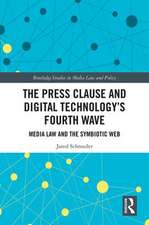Principles of Risk Analysis: Decision Making Under Uncertainty
Autor Charles Yoeen Limba Engleză Hardback – 11 feb 2019
Features:
- Details the tasks of risk management, risk assessment, and risk communication in a straightforward, conceptual manner
- Provides sufficient detail to empower professionals in any discipline to become risk practitioners
- Expands the risk management emphasis with a new chapter to serve private industry and a growing public sector interest in the growing practice of enterprise risk management
- Describes dozens of quantitative and qualitative risk assessment tools in a new chapter
- Practical guidance and ideas for using risk science to improve decisions and their outcomes is found in a new chapter on decision making under uncertainty
- Practical methods for helping risk professionals to tell their risk story are the focus of a new chapter
- Features an expanded set of examples of the risk process that demonstrate the growing applications of risk analysis
Files used in the creation of this book and additional exercises as well as a free student version of Palisade Corporation’s Decision Tools Suite software are available with the purchase of this book.
A less detailed introduction to the risk analysis science tasks of risk management, risk assessment, and risk communication is found in Primer of Risk Analysis: Decision Making Under Uncertainty, Second Edition, ISBN: 978-1-138-31228-9.
Preț: 1577.08 lei
Preț vechi: 1923.26 lei
-18% Nou
Puncte Express: 2366
Preț estimativ în valută:
301.78€ • 322.70$ • 251.61£
301.78€ • 322.70$ • 251.61£
Carte tipărită la comandă
Livrare economică 18 aprilie-02 mai
Preluare comenzi: 021 569.72.76
Specificații
ISBN-13: 9781138478206
ISBN-10: 1138478202
Pagini: 848
Ilustrații: 267 Illustrations, black and white
Dimensiuni: 156 x 234 x 49 mm
Greutate: 1.38 kg
Ediția:Nouă
Editura: CRC Press
Colecția CRC Press
ISBN-10: 1138478202
Pagini: 848
Ilustrații: 267 Illustrations, black and white
Dimensiuni: 156 x 234 x 49 mm
Greutate: 1.38 kg
Ediția:Nouă
Editura: CRC Press
Colecția CRC Press
Cuprins
Preface
About the Author
Chapter 1 The Basics
Chapter 2 Uncertainty
Chapter 3 Risk Management
Chapter 4 Risk Assessment
Chapter 5 Risk Communication
Chapter 6 Enterprise Risk Management
Chapter 7 Problem Identification for Risk Management
Chapter 8 Brainstorming
Chapter 9 Economics of Risk Management
Chapter 10 Risk Assessor’s Toolbox
Chapter 11 The Art and Practice of Risk Assessment Modeling
Chapter 12 Probability Review
Chapter 13 Choosing a Probability Distribution
Chapter 14 Characterizing Uncertainty through Expert Elicitation
Chapter 15 Monte Carlo Process
Chapter 16 Probabilistic Scenario Analysis
Chapter 17 Sensitivity Analysis
Chapter 18 Presenting and Using Assessment Results
Chapter 19 Decision Making Under Uncertainty
Chapter 20 Message Development
Chapter 21 Telling Your Story
Chapter 22 Example Applications
Appendix A: Using Palisade’s DecisionTools® Suite
Index
About the Author
Chapter 1 The Basics
Chapter 2 Uncertainty
Chapter 3 Risk Management
Chapter 4 Risk Assessment
Chapter 5 Risk Communication
Chapter 6 Enterprise Risk Management
Chapter 7 Problem Identification for Risk Management
Chapter 8 Brainstorming
Chapter 9 Economics of Risk Management
Chapter 10 Risk Assessor’s Toolbox
Chapter 11 The Art and Practice of Risk Assessment Modeling
Chapter 12 Probability Review
Chapter 13 Choosing a Probability Distribution
Chapter 14 Characterizing Uncertainty through Expert Elicitation
Chapter 15 Monte Carlo Process
Chapter 16 Probabilistic Scenario Analysis
Chapter 17 Sensitivity Analysis
Chapter 18 Presenting and Using Assessment Results
Chapter 19 Decision Making Under Uncertainty
Chapter 20 Message Development
Chapter 21 Telling Your Story
Chapter 22 Example Applications
Appendix A: Using Palisade’s DecisionTools® Suite
Index
Descriere
With six new chapters that respond to changes in the field of risk science, this book continues to appeal to professionals who want to learn and apply risk science in their own professions. Remaining a discipline free guide to the principles of risk analysis that is accessible to all interested practitioners will remain a hallmark of this book.



















